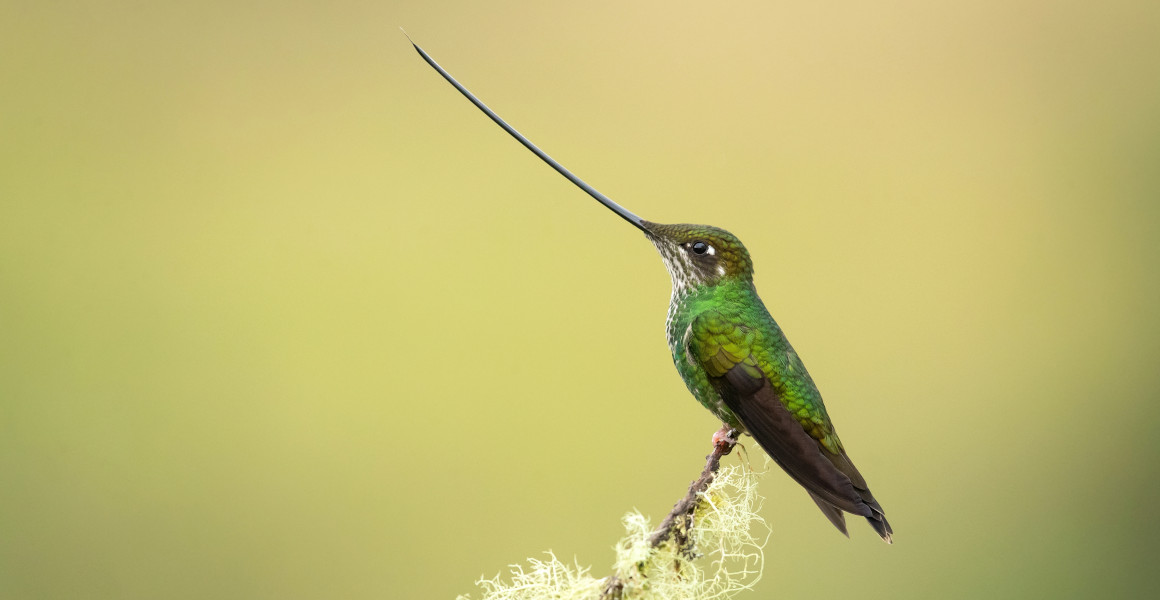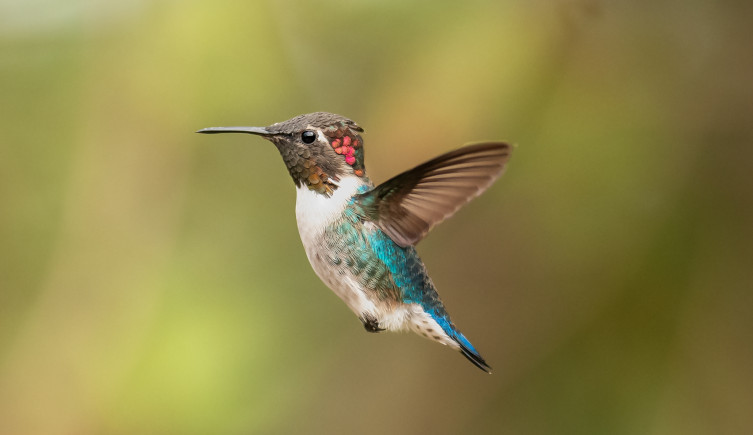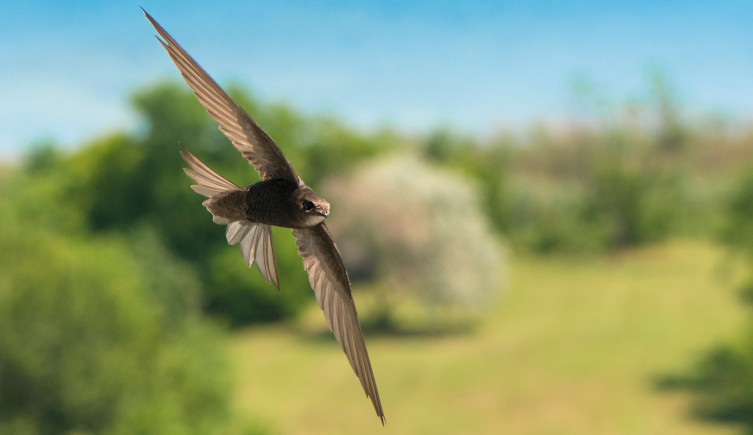The Natural History Museum’s collections are helping scientists to get a handle on how evolution works.
The digitisation of thousands of bird specimens is being used to try and explain some of the reasons behind our planet’s extraordinary diversity.

The sword-billed hummingbird has a beak that is almost as long as its entire body. Image © Milan Zygmunt/Shutterstock.
The Natural History Museum’s collections are helping scientists to get a handle on how evolution works.
The digitisation of thousands of bird specimens is being used to try and explain some of the reasons behind our planet’s extraordinary diversity.
Birds fit the bill for answering some of the biggest questions about evolution.
While the general principles behind evolution by natural selection have been known for more than 160 years, the scanning of museum specimens is allowing scientists to dig into some of the finer details.
A new study, using scans of beaks from over 8,700 bird species, is helping to work out how evolution changes at different scales.
Dr Gavin Thomas, a co-author of the paper from the University of Sheffield, says, ‘Bird beaks are an excellent trait to study evolution with as they vary in a consistent way. They have a huge range of shapes that seem to be linked to ecology, such as the food they eat and the way that they forage.’
‘If you take a trait from another group, like mammal skull shape, there’s so much variation that we wouldn’t be able to answer these questions about evolution.’
Dr Natalie Cooper, a Senior Researcher at the Natural History Museum who also co-authored the paper, adds, ‘While we focused on birds, we’re interested in answering big questions about evolution. How exactly does it happen? Why do we have this amazing diversity of life on Earth?’
‘While bird beaks are fascinating in their own right, this research can help to answer much more fundamental questions about evolution.’
The findings of the study were published in the journal Science Advances.

Over 8,000 birds from collections in the UK were used as part of the research. Image © The Trustees of the Natural History Museum, London.
The team are interested in how evolution compares across three different scales: microevolution, macroevolution, and megaevolution.
Microevolution is the form that most people will be familiar with. It describes evolution within a species, where variation between individuals leads to selection for certain traits that are better adapted for a given situation. As these individuals are more likely to survive, their traits are passed on to the next generation and slowly build up in a species.
The other terms are harder to define, but help to show the evolution of different species and groups of species.
‘Whereas microevolution is about evolution within species, macroevolution is about evolution among them, and how species diverge from one another,’ Gavin says. ‘Megaevolution represents the difference between higher taxonomic groups of animals, such as the evolutionary differences between mammals and birds.’
To draw comparisons at such a large scale, scientists need an equally large dataset. The team made use of bird collections housed at the Natural History Museum, Tring and Manchester Museum to 3D scan around 85% of all known bird species.
With help from community scientists, the researchers marked out different features on the bird specimens so that their beaks could be mathematically modelled. This meant that comparisons between different parts of the bird family tree could be more easily made.

The bee hummingbird is the smallest known bird, but despite the size difference, its beak has a similar shape to other hummingbirds. Image © Piotr Poznan/Shutterstock.
In their comparisons, the team were particularly interested in elaboration and innovation. These terms describe the different routes evolution can take, with bird groups given a score for each.
‘Elaboration is about variation on a theme,’ Natalie says. ‘Rather than doing something completely different, evolution takes traits down similar routes which lead to different outcomes.’
‘Innovation, meanwhile, is where evolution goes in a completely different direction and can create new characteristics that might not be seen in other groups.’
Some of the best examples of these processes in action are found in the 350 species of hummingbirds, which all feed on nectar. This means their beaks have similarities because of the challenges in getting nectar, but are all slightly different depending on the flowers the birds feed on.
‘While there are constraints on how they can feed on nectar, meaning hummingbirds tend to have very thin beaks, you can see the elaboration between different species,’ Gavin says. ‘The sword-billed hummingbird, for instance, has a bill that can be as much as 12 centimetres long, which is almost the length of its entire body.’
‘On the other end of the spectrum, the bee hummingbird has one of the shortest beaks in nature. The general morphology of the beaks is similar in both species, but their lengths are very different.’

While they're closely related to hummingbirds, the beaks of swifts are very different to their relatives'. Image © Dilomski/Shutterstock.
Comparing the beaks of hummingbirds to their closest living relatives, the swifts, reveals the impact of innovation. While hummingbirds have long, slender beaks, swifts have wide, short bills to help them catch flying insects. The difference between the beaks of the two groups is a good example of innovation.
‘Hummingbirds and swifts diverged around 50 million years ago, so they have been separated for a long time,’ Gavin says. ‘In that time they’ve evolved in completely different directions into new morphologies and ecologies.’
In general, the team found that at a macroevolutionary scale, elaboration tended to be more important than innovation as species diverged. Innovation tended to be more important at a megaevolutionary scale, with many different routes leading to large shifts between less related groups of birds.
Using the resulting scores, the team now hope to examine how elaboration and innovation are affected by a bird’s environment.
‘We want to see how these scores are linked to ecological and habitat factors,’ Natalie explains.
‘For instance, we’ve looked into island species for a future paper, as these animals are often seen as special. We wanted to see if innovation had a role to play in that and if it might be more common on islands than on the mainland.’
The researchers would also like to examine microevolution more closely, a part of the project which was delayed by COVID-19. This would allow the team to see if evolution at different scales follows similar patterns, giving deeper insights into this fundamental process.

We're working towards a future where both people and the planet thrive.
Hear from scientists studying human impact and change in the natural world.
Don't miss a thing
Receive email updates about our news, science, exhibitions, events, products, services and fundraising activities. We may occasionally include third-party content from our corporate partners and other museums. We will not share your personal details with these third parties. You must be over the age of 13. Privacy notice.
Follow us on social media